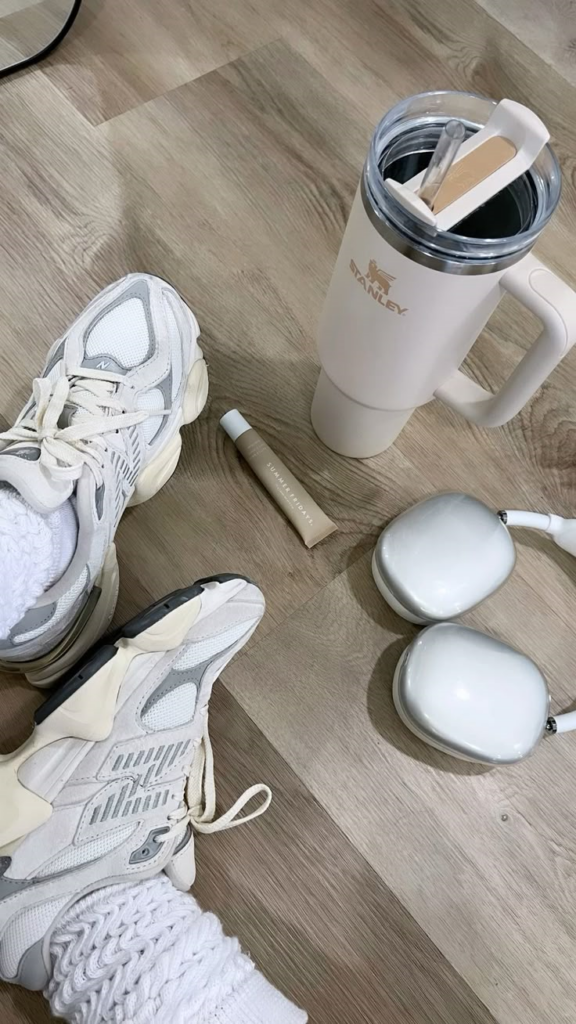Let’s talk about something that almost everyone has thought about at some point—losing fat. Whether it’s scrolling through social media posts about Ozempic, hearing friends talk about their “new plan,” or watching the latest body trend go viral, fat loss has become one of the most talked-about (and misunderstood) topics in our modern world.
According to the National Institutes of Health, nearly 1 in 3 adults in the U.S. are overweight, and over 2 in 5 are considered obese (US Department of Health). The fitness and wellness industry continues to boom because, like it or not, this conversation touches almost all of us.
My Story: From Overweight in College to a Healthier Me
Back in college, I was overweight. My blood pressure was high, and my resting heart rate hovered around 85 bpm. I tried everything—keto, 1200-calorie diets, intermittent fasting. But despite my best efforts, I couldn’t get the scale to budge.
It wasn’t until I stopped chasing trends and started learning how my body actually works that things changed. After diving into the science (thank you, biochemistry degree!), I began to see results—and not just physically. I’ve lost around 35 pounds, and I now sit at a healthy weight, with stable blood pressure, good blood sugar, and—most importantly—comfort in my own skin.
Today, people ask me how I did it. Friends comment on my arms, family asks about my transformation, and new acquaintances assume I’ve always been this lean. I’m here to set the record straight and share what really works—based on science, not quick fixes.
Understanding How to Loose Fat: It All Starts with Metabolism
Before we dive into calories, workouts, and food, let’s get one thing straight: What even is your metabolism?
Metabolism isn’t just the thing that “burns calories”—it’s the full set of chemical processes that keep your body alive. These include breaking down food (catabolism) and building the molecules your body needs (anabolism).
For the sake of fat loss, we don’t need a PhD in biochemistry, but we do need to understand how our bodies burn energy on a broader scale.
Here are the four key players:
- Basal Metabolic Rate (BMR)
- Thermic Effect of Food (TEF)
- Non-Exercise Activity Thermogenesis (NEAT)
- Exercise Activity
1. Basal Metabolic Rate: Your Body’s Bare Minimum
Your BMR is the number of calories your body needs to function at rest—think breathing, digesting, circulating blood, and all that behind-the-scenes magic. It’s influenced by age, sex, weight, height, and especially muscle mass.
Important tip: Never base your calorie deficit on your BMR alone. That’s the bare minimum your body needs. Eating below it can lead to serious health issues and a huge spike in hunger due to hormonal shifts.
This is also why extreme diets like 1200-calorie plans are unsustainable—they’re often below most people’s BMR.
As you lose fat, your BMR decreases (because your body weighs less), so building muscle helps fight that decline. When I added weight training to my routine, my weight plateaued—but my body composition kept improving. Why? Because I was burning fat and building muscle at the same time.
2. Thermic Effect of Food: Burning Calories While Eating
Yes, you actually burn calories just by digesting food. This is called the Thermic Effect of Food (TEF), and while it’s a smaller slice of your total calorie burn, it’s still worth understanding.
Protein and carbs have a higher thermic effect than fats, which means your body works harder (burns more calories) to digest them.
Here’s a quick breakdown of the three macronutrients:
- Carbs: Your main fuel source. Stored as glycogen in your muscles and liver. Cutting carbs might make you drop weight fast—but that’s often just glycogen and water, not fat.
- Protein: Crucial during fat loss. It keeps you full, helps preserve muscle, and has the highest thermic effect.
- Fat: High in calories, but absolutely necessary. Fats help regulate hormones—including those responsible for hunger and metabolism. Don’t skip them; just prioritize healthy sources (think avocados, nuts, and olive oil).
3. NEAT & Exercise: The Underrated Duo
NEAT refers to all the movement you do outside of the gym—walking your dog, cleaning the kitchen, pacing on a phone call. It’s shockingly effective and makes up a big chunk of daily calorie burn.
Exercise expenditure is self-explanatory: calories burned from workouts. But here’s the kicker—NEAT often burns more total calories in a day than your workout does.
So yes, going for that walk matters. Choosing stairs over the elevator matters. Even fidgeting can add up.
Also, weight training has a hidden bonus: it increases your BMR over time by helping you build muscle.
So… How Do You Actually Lose Fat?
Let’s put all the puzzle pieces together.
Step 1: Figure Out Your Maintenance Calories
Start by finding your maintenance calorie level—the number of calories you need to maintain your current weight based on your activity level. You can use online calculators for this (make sure to include your activity, not just your BMR!).
Once you’ve got your number, aim for a small calorie deficit—about 200–500 calories/day. Slower is better. You’re aiming for sustainability, not crash dieting.
Step 2: If You’re Inactive, Focus on Building Muscle First
If you’re new to exercise, don’t jump straight into a deficit. Instead:
- Eat at maintenance
- Lift weights or do resistance training
- Prioritize protein and balanced meals
You’ll likely lose fat and gain muscle, even if the scale doesn’t move much. This is what happened to me during the first few months. My body composition changed drastically even when my weight didn’t.
Stay in this phase for at least 6–12 months. Building muscle takes time, but it pays off in every way. If you need any help getting started on your fitness journey, I have an article on How to Stay Consistent with Your Workouts and Actually Enjoy it here!
Step 3: Create a Thoughtful Calorie Deficit
Once you’ve built a good foundation and feel confident in your routine, then you can slowly introduce a deficit.
- Reduce your intake by no more than 500 calories/day
- Prioritize protein intake and resistance training
- Stay consistent, not extreme
Be warned: Losing fat too quickly can backfire. Fat cells release hormones like leptin, which suppresses hunger. When you lose weight fast, those hormone levels drop, which increases hunger and makes it harder to maintain the loss. So take it slow and give your body time to adjust.
Final Thoughts: This Isn’t Just About Aesthetics
Yes, it’s okay to want to look leaner—but the real reward is in how you feel: stronger, healthier, more energetic, and confident in your own skin.
Fat loss isn’t a sprint; it’s a long-term relationship with your body. You’ll learn, adapt, fail, and succeed along the way. And that’s the point.
I’m not a doctor, but I am someone who’s been there, learned the science, and come out stronger—literally. This guide is the framework that helped me change my life, and I hope it helps you too.
Want to dive deeper?
I’m working on a post about getting started with strength training and will link it here soon! Or feel free to leave a comment or message me with your questions—I’m always down to talk about metabolism, macros, or just the best gym playlist.
Let me know if you want to break this up into a blog series (like a post for each section), or if you’d like a title that’s punchier than The Real Guide to Long-Term Fat Loss.
Citations
“Overweight & Obesity Statistics – Niddk.” National Institute of Diabetes and Digestive and Kidney Diseases, U.S. Department of Health and Human Services, www.niddk.nih.gov/health-information/health-statistics/overweight-obesity. Accessed 18 Apr. 2025.

















